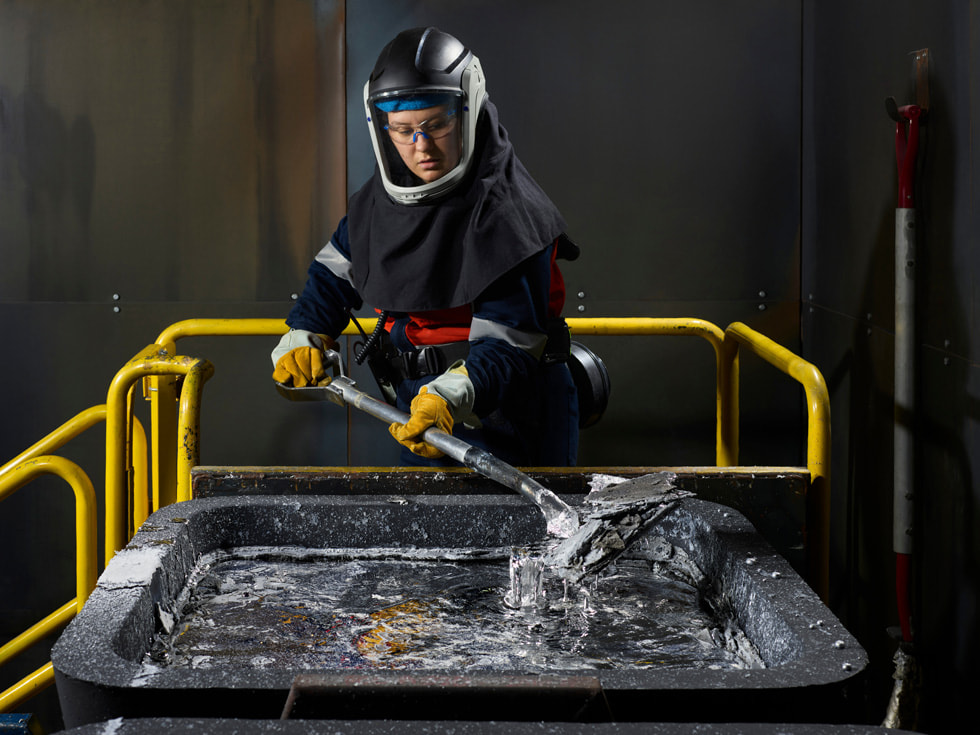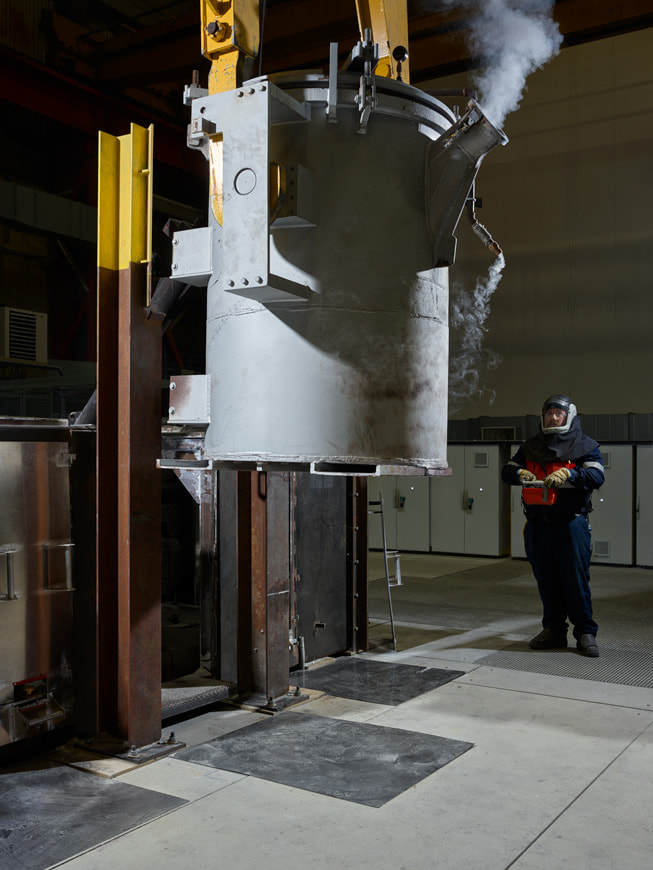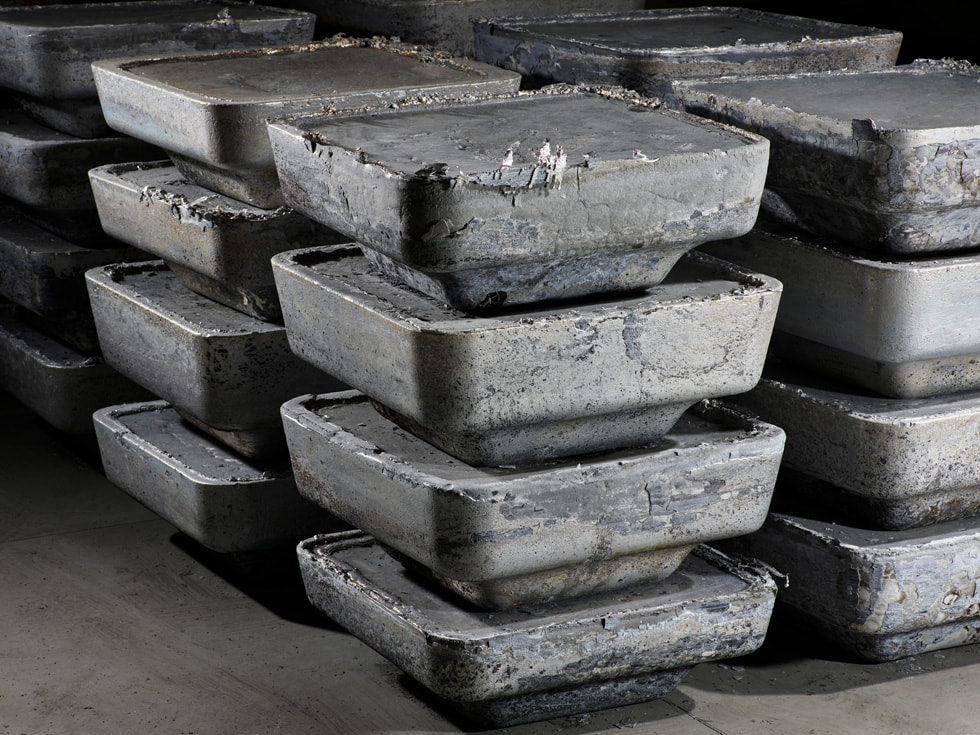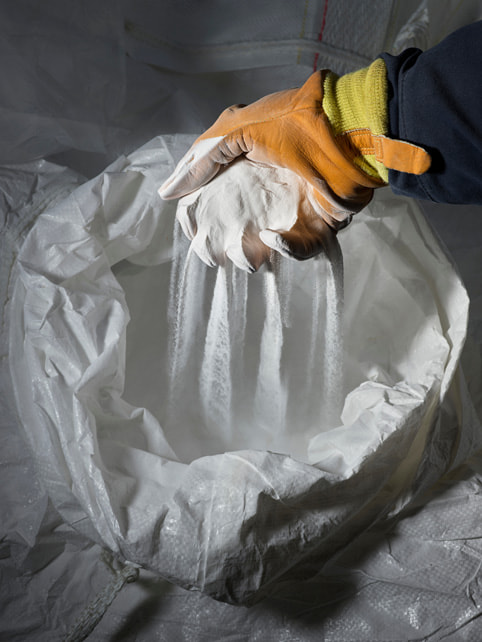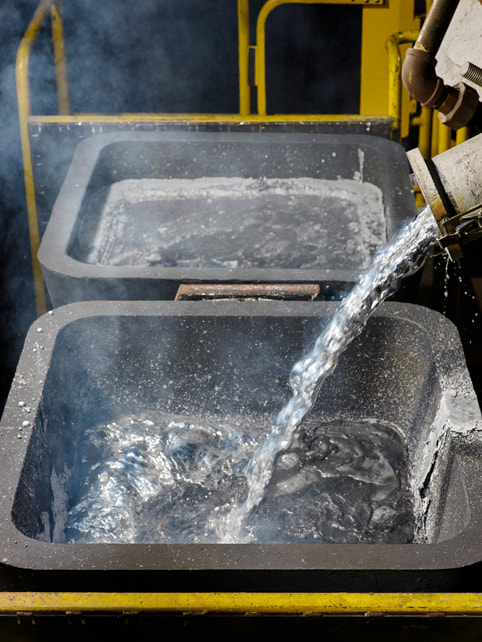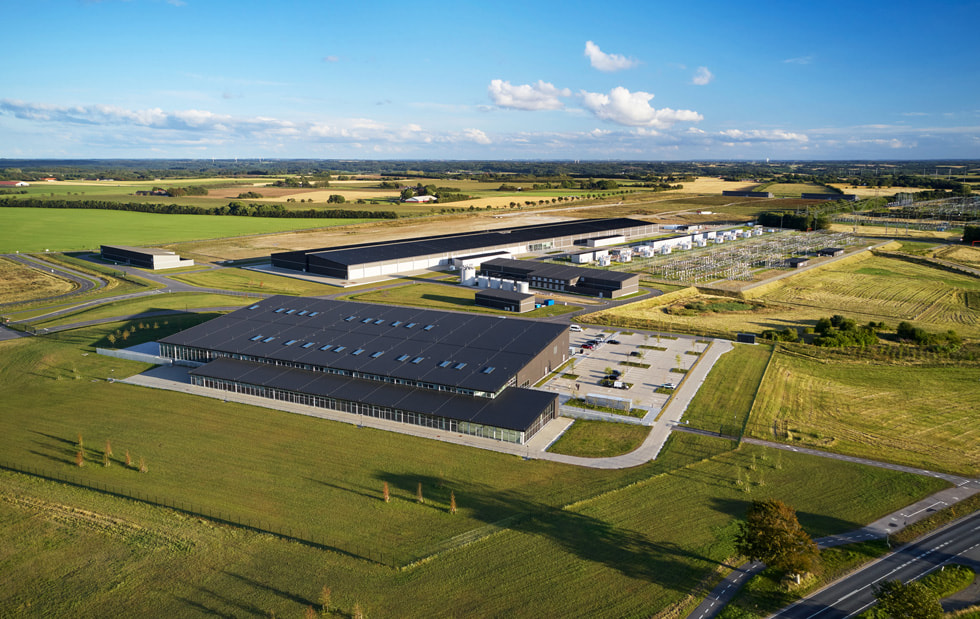UPDATE
March 24, 2022
Apple’s $4.7B in Green Bonds support innovative green technology
The company plans to use the world’s first commercial-purity low-carbon aluminum from ELYSIS in the iPhone SE
Investments from Apple’s $4.7 billion in Green Bonds have helped jump-start the development of new low-carbon manufacturing and recycling technologies, the company announced today. Apple has issued three Green Bonds since 2016, with projects showcasing how the investments can reduce global emissions and bring clean power to communities around the world.
As part of this work, Apple is purchasing direct carbon-free aluminum following a major advancement in smelting technology to reduce emissions. The aluminum is the first to be manufactured at industrial scale outside of a laboratory without creating any direct carbon emissions during the smelting process. The company intends for the material to be introduced in the iPhone SE.
“Apple is committed to leaving the planet better than we found it, and our Green Bonds are a key tool to drive our environmental efforts forward,” said Lisa Jackson, Apple’s vice president of Environment, Policy, and Social Initiatives. “Our investments are advancing the breakthrough technologies needed to reduce the carbon footprint of the materials we use, even as we move to using only recyclable and renewable materials across our products to conserve the earth’s finite resources.”
In total, Apple has issued $4.7 billion to accelerate progress toward the company’s goal to become carbon neutral across its supply chain by 2030. Its first two bonds in 2016 and 2017 are now fully allocated. The 2019 Green Bond is supporting 50 projects, including the low-carbon aluminum breakthrough. These 50 projects will mitigate or offset 2,883,000 metric tons of CO2e, install nearly 700 megawatts of renewable energy capacity around the world, and promote new recycling research and development.
Innovation in Green Aluminum Smelting
ELYSIS, the company behind the world’s first direct carbon-free aluminum smelting process, announced that it has produced the first commercial-purity primary aluminum at industrial scale for use in Apple products. The breakthrough technology produces oxygen instead of greenhouse gases, and the achievement marks a major milestone in the production of aluminum, one of the world’s most widely used metals. Apple will purchase this first batch of commercial-purity, low-carbon aluminum from ELYSIS for intended use in the iPhone SE. This aluminum was produced by ELYSIS at its Industrial Research and Development Centre in Quebec using hydropower.
Apple helped spur this revolutionary advancement in aluminum production through an investment partnership with Alcoa, Rio Tinto, and the governments of Canada and Quebec that began in 2018. The following year, Apple purchased the first-ever commercial batch of aluminum resulting from the joint venture, using it in the production of the 16-inch MacBook Pro.
“This is the first time aluminum has been produced at this commercial purity, without any greenhouse gas emission and at industrial scale. The sale to Apple confirms the market’s interest in aluminum produced using our breakthrough ELYSIS carbon-free smelting technology. Today’s announcement proves that ELYSIS, a joint venture between Alcoa and Rio Tinto, was able to turn an idea into reality,” said Vincent Christ, ELYSIS’s CEO. “We are excited to be working alongside Apple on this advancement, which has the potential to make lasting changes in how aluminum is produced.”
From left to right: (1)ELYSIS produced the first batch of commercial-purity, low-carbon aluminum at its Industrial Research and Development Centre in Quebec. (2)The low-carbon aluminum breakthrough builds on the significant progress Apple has made in reducing the carbon impact of aluminum and other metals found in its products.
From top to bottom: (1)ELYSIS produced the first batch of commercial-purity, low-carbon aluminum at its Industrial Research and Development Centre in Quebec. (2)The low-carbon aluminum breakthrough builds on the significant progress Apple has made in reducing the carbon impact of aluminum and other metals found in its products.
Today’s milestone builds on the significant progress Apple has made in reducing the carbon impact of aluminum and other metals found in its products. By switching to recycled aluminum and aluminum smelted using hydroelectricity instead of fossil fuels, the company’s carbon emissions associated with aluminum have decreased by nearly 70 percent since 2015. Every model in the iPad lineup, including the new iPad Air, along with the latest MacBook Pro, MacBook Air, Mac mini, and Apple Watch, are made with a 100 percent recycled aluminum enclosure.
Commitment to Clean Energy
Apple continues to use its Green Bonds — which are among the largest in the private sector — to develop new sources of renewable energy. More than $500 million of the company’s 2019 Green Bond proceeds have been allocated to clean energy projects. This includes the world’s largest onshore wind turbines, which power the company’s data center in Viborg, Denmark, with all surplus energy going back into the Danish grid.
Over the next year, Apple will expand the Viborg data center’s operations and build new infrastructure to capture excess heat energy for the city’s long-term benefit. As with its data centers, all Apple offices and retail stores across 44 countries have sourced 100 percent clean energy since 2018, including through Green Bond proceeds.
In 2021, Apple’s 2019 Green Bond helped support its Supplier Clean Energy Program, including allocations to training and resources to help guide suppliers in their transition to clean power, and policy advocacy efforts in Japan, Vietnam, and South Korea to help build cost-effective renewable energy markets. More than 175 manufacturing partners across 24 countries have now committed to using 100 percent renewable energy for Apple production, a critical milestone toward ensuring every Apple product has a net-zero climate impact.
For more information on Apple’s Green Bond efforts, visit investor.apple.com/Apple_GreenBond_Report.pdf. This year’s annual impact report covers the cumulative allocation of Apple’s 2019 Green Bond proceeds to environmental projects that incurred spend between September 29, 2019, and September 25, 2021 — Apple’s 2020 and 2021 fiscal years. Sustainalytics provided a second-party opinion on the selected projects, and Ernst & Young LLP provided an attestation report on the spend.
Share article
Media
-
Text of this article
-
Images in this article
